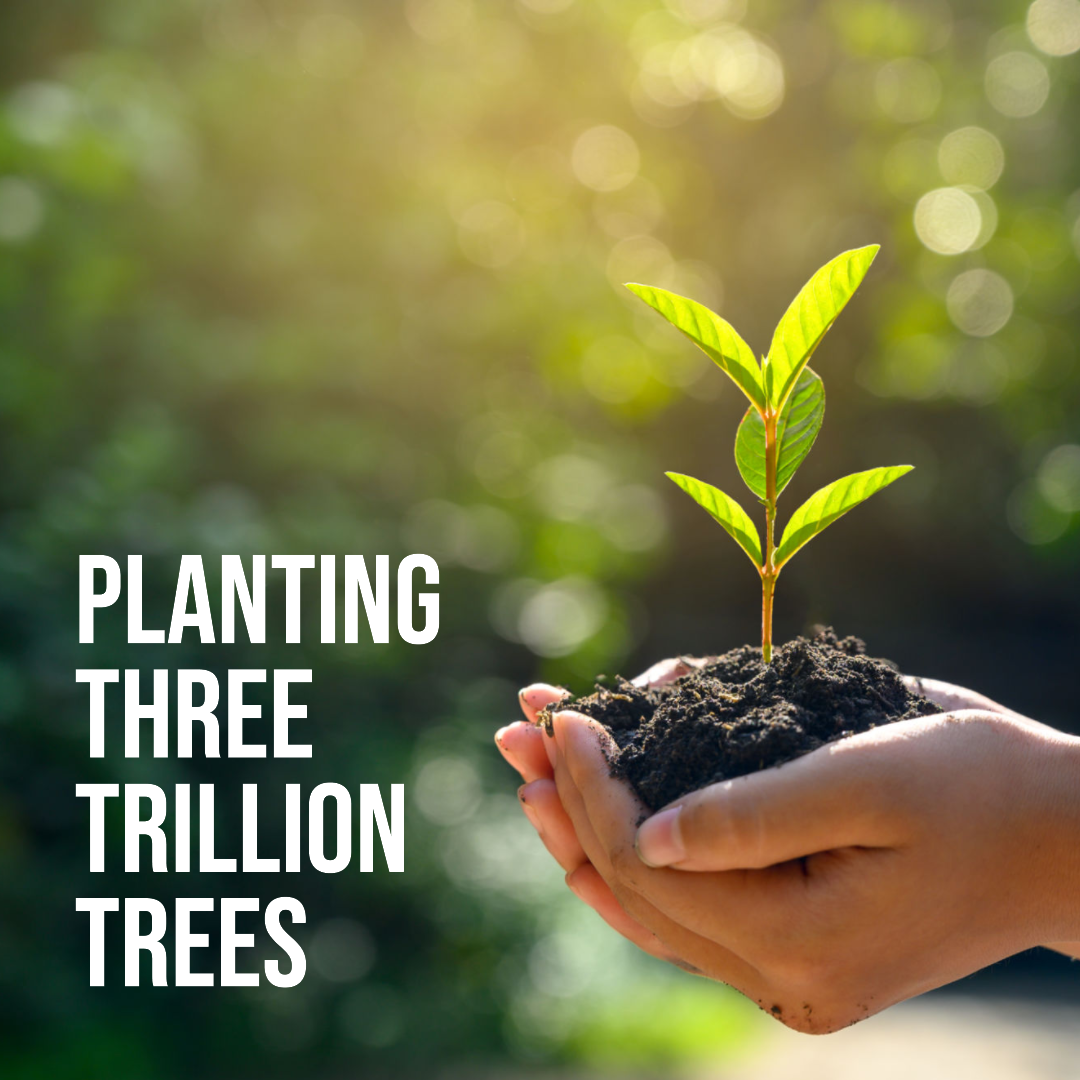PLANTING ON INDUSTRIAL SCALE
Plantation Vision & Mission
Potentials, Challenges and Policy Options for Global Industrial Forest Plantation Development

Expansion of tree (forest) plantations on an industrial scale globally is required to achieve the goal of planting three trillion trees. However, forest plantations alone will not be sufficient to meet the growing demand for roundwood. Natural and semi-natural forests in boreal and temperate zones will maintain their important role as the raw material source. The supply from these forests is not likely to increase from the current level, but will need human intervention to balance the demand and supply of wood for our consumption. Moreover, sustainable management of tropical natural forests will not result in any increase of roundwood supply. Therefore, developing global industrial forest plantations sustainably will be crucial to meeting increasing wood demand in the long term.
There are several reasons for forest plantation on an industrial scale:
- Wood production: Forest plantation provides a sustainable source of timber for the wood industry, which is used to make furniture, paper, and other wood products.
- Environmental benefits: Forests are important for carbon sequestration, which helps to mitigate climate change by removing carbon dioxide from the atmosphere. Forest plantation can help to create new forests and increase the amount of carbon sequestered.
- Biodiversity conservation: Forest plantation can help to restore degraded forests and provide habitat for wildlife, which helps to conserve biodiversity.
- Soil conservation: Forests help to prevent soil erosion and improve soil quality, which is important for agriculture and food security.
- Job creation: Forest plantation provides employment opportunities for people in rural areas, which helps to alleviate poverty and stimulate economic development.
- Water conservation: Forests help to regulate the water cycle and maintain water quality, which is important for drinking water and irrigation.
Overall, forest plantation on an industrial scale can provide multiple benefits for society, including economic, environmental, and social benefits. However, it is important to ensure that forest plantation is done in a sustainable and responsible manner to avoid negative impacts on the environment and local communities.
Techniques and Methods Required for Forest Plantations on Industrial Scale
Forest plantation on an industrial scale typically involves the following techniques and methods:
- Site selection: Suitable sites need to be selected for forest plantation, based on factors such as soil type, climate, and topography. Site preparation may involve clearing the land of existing vegetation, leveling the ground, and improving soil fertility.
- Species selection: The choice of tree species depends on the intended use of the forest plantation, as well as local environmental conditions. In some cases, genetically improved or hybrid species may be used to increase productivity or improve disease resistance.
- Planting: Trees can be planted by hand or using mechanized equipment, depending on the scale of the plantation. Planting density and spacing will depend on the species and the intended use of the plantation.
- Maintenance: Forest plantation requires regular maintenance, including weed control, fertilization, and pest management. Thinning may also be required to improve tree growth and optimize wood production.
- Harvesting: Trees are typically harvested when they reach maturity, which can take several years or even decades. Harvesting can be done selectively or by clearcutting, depending on the management objectives of the plantation.
- Replanting: After harvesting, the land can be replanted with new trees to maintain the forest cover and ensure a sustainable supply of wood.
- Monitoring and assessment: Regular monitoring and assessment of the forest plantation are required to ensure that the management practices are effective and sustainable, and to identify any issues or opportunities for improvement.
Overall, successful forest plantation on an industrial scale requires careful planning, implementation, and management, with a focus on sustainability, productivity, and environmental stewardship.
What tools are required for forest plantations on industrial scale?
Forest plantation on an industrial scale requires the use of various tools and equipment, depending on the specific activities involved. Some of the common tools and equipment used in forest plantation include
- Chainsaws: Chainsaws are used for felling trees and cutting logs into manageable sizes for transport and processing.
- Tractors and bulldozers: Tractors and bulldozers are used for land preparation, including clearing and leveling the ground, and creating access roads.
- Planting machines: Planting machines are used for planting trees on a large scale. These machines can plant thousands of seedlings in a single day, which is much faster and more efficient than manual planting.
- Pruning saws and shears: Pruning saws and shears are used for trimming and shaping tree branches to promote healthy growth and improve wood quality.
- Organic Fertilizer applicators: Fertilizer applicators are used to distribute organic fertilizer to trees, which helps to improve their growth and productivity.
- Pest management equipment: This includes equipment for applying natural pesticides to control pests and diseases that can damage or kill trees.
- Harvesting equipment: Harvesting equipment includes chainsaws, harvesters, and forwarders, which are used to cut and transport logs from the forest to the processing facility.
- Monitoring and assessment tools: GIS based software tools are used in considering plantation sites, also include tools for measuring tree growth, soil fertility, and water quality, as well as remote sensing technologies for mapping and monitoring forest cover and other environmental variables.
Overall, forest plantation on an industrial scale requires a range of specialized tools and equipment to ensure efficient and effective management of the forest resource.
What will be the factors in successfully planting three trillion trees to absorb excess Co2 from atmosphere?

Planting three trillion trees to absorb excess CO2 from the atmosphere is an ambitious goal that would require a significant effort from governments, organizations, and individuals around the world. Some of the key factors that will be critical to the success of such an effort include:
- Adequate funding: Planting three trillion trees will require significant financial resources to cover the cost of seedlings, planting, maintenance, and monitoring. Funding will need to be secured from governments, private donors, and other sources.
- Suitable land availability: Sufficient land needs to be identified and made available for planting trees, and it needs to be suitable for tree growth. The land should not be used for other important purposes such as food production, and it should be able to support healthy tree growth.
- Appropriate species selection: Planting machines are used for planting trees on a large scale. These machines can plant thousands of seedlings in a single day, which is much faster and more efficient than manual planting.
- Effective monitoring and evaluation: Monitoring and evaluation are crucial to ensure that the trees are growing and sequestering carbon as expected. Effective monitoring will require the use of remote sensing technologies, as well as on-the-ground measurements and observations.
- Community engagement: The success of the project will depend on the support and participation of local communities. Engaging with communities and involving them in the planting and maintenance of trees can help to build support for the project and ensure its sustainability.
- Climate change mitigation policies: Policies and regulations that support tree planting and forest conservation can help to create an enabling environment for the project. Policies such as carbon pricing and carbon offsetting can also help to generate additional funding for the project.
Overall, successfully planting three trillion trees to absorb excess CO2 from the atmosphere will require a collaborative effort involving governments, organizations, and individuals. The project will need to be well-planned, carefully implemented, and continuously monitored and evaluated to ensure its success.